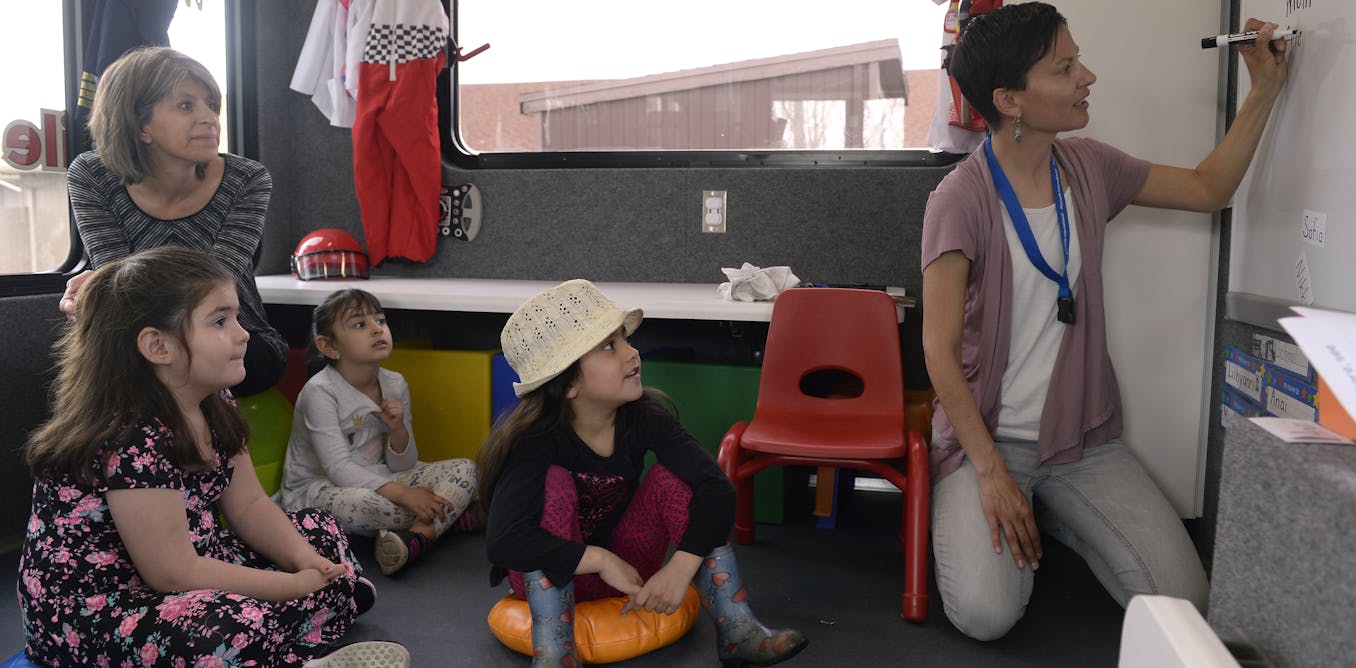For more than a decade, artist Hito Steyerl has been writing—in biting, playful prose—about how images, technology, and politics are all interlinked. Her newest book on the subject, Medium Hot: Images in the Age of Heat, out from Verso, throws her consistent through lines into relief, and brings forward inconsistencies in her thinking too.
Steyerl’s first book, The Wretched of the Screen (2013), was perhaps her most rousing. “Free Fall,” a standout essay therein, interrogates the European construction of linear perspective as a means for “enabling Western dominance,” then pivots to the increasing ubiquity of aerial perspective—a militaristic, surveilling way of seeing that “projects delusions of stability, safety, and extreme mastery.” Another essay, “Politics of Art: Contemporary Art and the Transition to Post-Democracy,” urges artists to examine the exploitative politics of the art world itself, such as its reliance on under- or unpaid labor.
The artist takes to related topics in her visual work too, sometimes treating the material with an unnerving absurdity. How Not to Be Seen: A Fucking Didactic Educational .MOV File (2013), one of her best-known works, navigates the question of invisibility in an increasingly surveilled world by satirizing the form of instructional video. Steyerl, the video’s protagonist, offers absurd suggestions for avoiding surveillance. Smearing chroma-key green makeup on her face, she “disappears” into the background; she also archly suggests being smaller than a pixel, being a woman over 50, and being a disappeared person as an enemy of the state. This jarring tonal contrast is emblematic of her work, the dissonance buffered by her focus on larger systems rather than specific scenarios.
Hito Steyerl: How Not to Be Seen: A Fucking Didactic Educational .MOV File, 2013.
Courtesy Andrew Kreps Gallery, New York and Esther Schipper, Berlin, London, and Seoul.
Steyerl’s second book, Duty Free Art (2017), continues her project of highlighting how capital, exploitation, and art are intertwined, though it takes on a broader constellation of phenomena, including romance scams, freeport art storage, and the rise of fascism. Yet where in Wretched, the reader felt the keen glare of Steyerl’s concentration, in some of Duty Free Art’s essays, it’s hard to tell what’s fact or fiction, or just how serious Steyerl is about it all: As her international fame has risen, Steyerl has presented herself alternately as gadfly, critic, oracle of surfaces, and politically engaged artist. The opening anecdote in her 2014 essay “Proxy Politics: Signal and Noise”—about smartphone cameras using algorithms and scans from a user’s camera roll to “create” images—sounds fantastically interesting, jaw-dropping if true. But Steyerl’s description of the technology proves far more fanciful than the paper she cites.
These fabulations, paired with Steyerl’s gliding, affectless authorial voice, contribute to a sense of disorientation. Nevertheless, Steyerl topped ArtReview’s 2017 Power List as the most influential person in the art world for her “political statement-making and formal experimentation.” Her best work merges these aspects: Any viewer of How Not to Be Seen will surely consider their vulnerability to surveillance, and feel the futility of escape. In a 2023 interview, journalist Philip Oltermann asked her if she “saw art as a way to point a finger at social injustices, to educate people?” Steyerl replied with a decisive no, saying “it would be pointless if art worked like that. If you want to make a difference with art, which is a motive I perceive as questionable, then the single most stupid approach would be to tell people off.”

Courtesy Verso
IN HER LATEST BOOK, Steyerl returns to her familiar territory of war and violent conflict, updated for the era of Web3, and this time she expresses her stance more decisively and simply than ever before. Steyerl herself has relied on AI before, using it to generate animations and graphics; her deep interest in—and intimate familiarity with—new technologies is part of what allows her to see their potential for exploitation. In Medium Hot, she comes down hard on the so-called promise of generative AI, cryptocurrency, and the AI-fueled accelerationist fantasies of Big Tech investors. It’s exciting to see Steyerl take such a definitive position; yet in doing so, the book exposes a core inconsistency of her practice, a puzzling political lacuna.
Steyerl’s primary critique is that the industry surrounding AI and Web3 uses enormous amounts of energy and is wildly exploitative not only of the environment, but of human “micro-workers,” remote laborers paid not in wages but in tiny gamified increments, dependent on completed tasks. Crypto mining has thrived on the edge of conflict zones—as it did in Kosovo until it was banned in 2022—where political instability combined with formerly socialist infrastructure contributed to cheap energy that could immediately be put into mining. All this energy must come from somewhere: Earth itself pays the cost.
The cheap labor essential to “artificial intelligence” feeds on the exploitative conditions generated by political and economic instability. Steyerl highlights the example of Kurdish women workers in northern Iraq, who are hired to do ghost work tagging images for self-driving cars. Women often take these jobs because the work can be done from home; for some of them, home is a refugee camp where they have lived for 10 years. The irony, Steyerl points out, is that “self-driving cars were being trained by people who, in many cases, had difficulties accessing affordable transport anywhere—let alone enjoying freedom of movement across borders.”
These critiques aren’t necessarily new, but they are urgent; many opponents of AI—or rather, of its unrestricted and irresponsible use—have cited its exploitation of microworkers and its environmental harm. Steyerl makes a more novel, if subtler point when she describes how crypto art is responsible for “onboarding” people to Web3, its infrastructure “creating a new stage of financialization defined by massive waste of energy and an enormous carbon footprint.”
The NFT bubble has popped, of course. But many people have bought into this new technological environment, with crypto wallets and ChatGPT on their phones. The end result, Steyerl speculates, probably won’t be the singularity, but something much less interesting: newer and more invasive ways of getting ripped off by tech companies. For now, many AI services—Google search summaries, ChatGPT—are free. But what will happen when users become dependent on them? They’ll likely charge for subscriptions, scraping consumers’ data only to sell it back to them.
All, of course, as the world burns.
The rapid rollout of various generative AI apps—like DALL-E, Midjourney, Stable Diffusion, and Sora—has been accompanied by a hype cycle of publicity. Artists, of course, know that generative AI isn’t worth the hype: The images these tools create are universally shitty slop, scraped together from previously existing internet detritus. Yet, Steyerl argues, the breathless publicity around generative AI and its so-called creative applications masks its true, and perhaps only, utility: as a tool of dominance and warfare. Autonomous weapons and AI-driven targeting have been part of the global war playbook since at least 2021, with both Ukraine and Gaza becoming, she writes, “laboratories for testing AI warfare, very often by Western arms makers looking for a robust and regulation-free R&D environment.”

Hito Steyerl: November, 2004.
Courtesy Andrew Kreps Gallery, New York and Esther Schipper, Berlin, London, and Seoul.
AS IN NEARLY ALL Steyerl’s work, Medium Hot is concerned with what happens in conflict regions. The book cites interviews with Kurdish workers in refugee camps, as well as conversations with recent immigrants to Germany; she mentions both the wars happening in Gaza and Ukraine. Yet, for a writer so interested in the systemic causes of exploitation and suffering, she refrains here from expressing a stance on any given global conflict, an omission that creates a strange lacuna—a kind of weightlessness that destabilizes the text.
Calling wars and genocides “conflicts”—a word that appears 21 times in the book—makes it easier to talk about their roles in systems, but it also has an alienating effect. Shouldn’t one care about the causes and conditions of those conflicts? They are not inexorable acts of machinery, their conclusions already forgone.
Perhaps Steyerl’s avoidance of taking sides originates from a formative experience. Two decades ago, she made a short documentary titled November (2004) that features clips from a shoot-’em-up Western film Steyerl made with her close friend, Andrea Wolf, when they were both 17. Only the men, the bad guys, draw weapons in the film; the women fight with their bare hands. These clips of fake violence are juxtaposed against found footage: In the 1990s, Wolf went underground to join the Kurdish Worker’s Party, or PKK. She was killed in 1998, possibly executed by the Turkish government. Wolf was made a martyr; November includes footage of protesters on the street carrying posters depicting her face.
The film, like the rest of Steyerl’s work, avoids neat narrative, yet it is profoundly about disillusionment—with armed resistance, with the hero’s righteous violence. The revolutionary desire that led Wolf to join
the PKK ended with her lying dead on a dusty road, though according to the German government, she is not dead—but merely disappeared. Steyerl acknowledges Germany’s support of the Turkish army; in her narration, she also notes that the PKK itself has committed violent crimes, including killing civilians. Clips show pro-Kurdish protests in Germany, one scene featuring a man declaring via microphone: “It is German tanks that are bulldozing Kurdish villages.”

Hito Steyerl: November, 2004.
Courtesy Andrew Kreps Gallery, New York and Esther Schipper, Berlin, London, and Seoul.
In 2019 Steyerl protested in solidarity with Kurdish liberation, staging a performance, Women for Rojava, with three other artists. She called for Germany to stop show-ing her work “as part of its external cultural diplomacy,” continuing, “I am sick of my work being deployed to detract attention from the German state’s tacit agreement with displacement, ethnic cleansing, and warfare, and to lend it an aura of tolerance and inclusivity.” It’s impossible not to draw parallels between then and now, as US-made and German arms rain down on Palestinian refugee camps.
But Steyerl doesn’t. Though she has consistently—if with some affective distance—positioned herself as a champion of class solidarity and of the oppressed and exploited, she spoke scathingly last spring of pro-Palestinian activists who have been critical of Israel, whom she accused of enlisting “art as social media performance.” She has also critiqued the “English-language academic bubble” for, in her eyes, failing to fully comprehend Germany’s history and its commitment to defend against what it perceives to be anti-Semitism. Is Steyerl’s curious lacuna, as the deep ambivalence of November may indicate, a somewhat stifled call for nonviolence? Is it an act of self-preservation amid an increasingly bitter divide in the German art world? Or is it a stance of neutrality
Neutrality, after all, pervades Medium Hot, which, as its title suggests, frequently returns to the imagery of heat. There’s the effect of AI’s energy use on the climate, with Steyerl’s concern for the planet thrumming behind the text. It addresses as well the output of generative AI through temperature, describing how the process of statistical image rendering sees a clear image as “cool,” while adding noise creates “heat.” A new image is created by removing that noise, and therefore, Steyerl argues, these images have nothing at all to do with what is indexically “seen” by an eye, but rather what the AI model detects as hot and cold. In other words, these images are a “medium hot.” According to the laws of thermodynamics, energy is only possible when there exist regions of both hot and cold. The heat death of the universe thus occurs when neutrality has been achieved—when all temperatures are the same: when zones cannot be differentiated.
Near the end of the book, Steyerl references Roko’s Basilisk, a thought experiment from the early days of AI speculation. The question posed is: If you knew a superintelligent AI would eventually dominate the earth, would you support it now, or wait until you had no choice? But Steyerl knows the question is wrong, because it supposes too narrow, too dismal a future. “Maybe the thing that really exists in the future is not an autocratic, bullying basilisk but a commune or cooperative of red hackers who have finally realized a sustainable and fair economy,” Steyerl writes. “One might be bullied and threatened … but if anyone tells you that you have no choice, then you should say no.” If only she would.

The post “The Holes in Hito Steyerl’s Political Thinking” by Emily Watlington was published on 06/04/2025 by www.artnews.com





































Leave a Reply